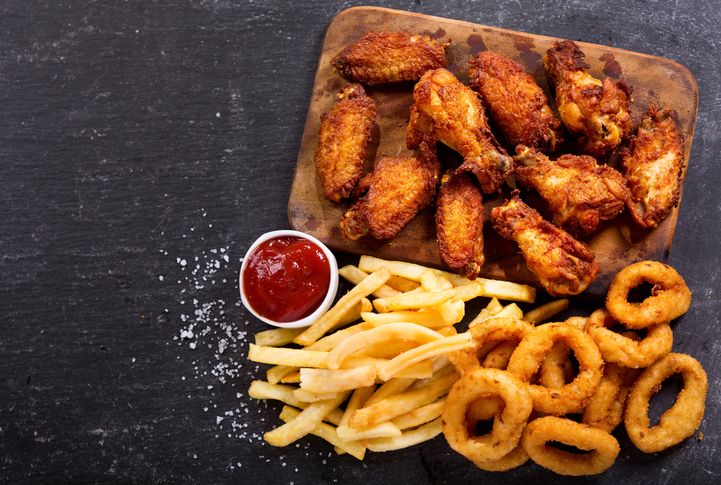Nutrition
Articles
Cheat Meal Mistakes: Don’t Sabotage Your Nutrition With These All-To-Common Errors
by Poliquin Group™ Editorial Staff
9/27/2017 7:11:42 AM

Used to be that cheat meals were a somewhat esoteric practice used by body builders to get some relief from strict dieting. Nowadays, dietary cheating is mainstream popular and everyone is doing it. In the process, it’s become common to go off the rails with cheating so that you end up doing your body more harm than good.
This article will help you avoid sabotaging your nutrition with a rundown of five common cheat meal mistakes.
Mistake #1: Turning A Cheat Meal Into A Cheat Day
Somewhere along the way, someone got the idea that cheating was best done ALL day long. We wish!
But an all day cheat can easily lead you to double or even quadruple the number of calories you’d normally consume, eliminating a week of hard work. If you eat unhealthy foods or ones that you’re body doesn’t tolerate well, you’ll end up with a cheat “hangover,” which can affect energy levels and training quality for days to come.
Solution: Restrict cheating to a single meal. When you leave the table, the cheat meal is over. Finito! Terminado! Done!
For example, if you’re letting loose during a night out with friends, it’s generally best to restrict your cheat to one restaurant instead of going crazy with pre-dinner drinks, a meal, dessert, a night of bar hopping, and a drunken pizza binge before you hit the sack.
Mistake #2: Keeping Multiple “Cheat” Foods In The House
Having left over cheat foods is a recipe for temptation, which can easily snowball into an all-out binge just when you need to get back to healthy eating.
Because highly palatable, unhealthy foods can change the architecture of your brain, the simple act of eating them makes it more likely you’ll crave them in the future. Even with the strongest convictions, this makes it nearly impossible to avoid indulging as your brain repeatedly reminds you of the Cherry Garcia ice cream in the freezer or the Mac and Cheese ingredients just waiting to be made.
Solution: Instead of keeping multiple “cheat” foods at your fingertips (donuts, pizza, chips, ice cream, mac and cheese), limit your exposure by purchasing only enough for your cheat meal.
Mistake #3: Choosing Junk Food
While it may be a cheat meal, the quality of the food you put in your body still matters. There’s a big difference between junk food made with high-fructose corn syrup, trans fats, and artificial flavorings and quality foods that just happen to be higher in carbs or fat.
It’s also important to steer clear of foods that your body doesn’t handle well. For some, this will be wheat or gluten, for others it means limiting dairy. The key is to avoid making choices that are going to screw with our metabolic hormones and trigger an inflammatory response in the body.
Solution: A good way to tell if a cheat food works for you is how you feel the next day. If your joints are sore, your face is puffy, or you feel ill and bloated, it’s a good indicator you want to re-think your cheat.
Mistake #4: Going Overboard With Alcohol
A few glasses of wine or a cocktail may be just what you need to take the edge off after a week of healthy eating and intense training. But alcohol lowers inhibitions and this applies to what and how much you eat just as much as it might make you more flirtatious.
For example, studies consistently show that after a few drinks, people eat more unhealthy foods, increasing their calorie intake over normal. “Off-limit” foods also become more tempting when under the influence of alcohol. One study found that vegetarians were more likely to eat meat after they had been drinking.
Solution: One approach that works well for people who are newer to cheat meals is to choose to pick either alcohol or food for your cheat. Don’t mix the two because it can easily lead you to go to a place you don’t want to calorie-wise. Once you’ve had some experience with how you deal with cheat meals and feel confident that you won’t overdo it, limiting alcohol to a drink or two with a sensible cheat meal can work well. The key is to avoid getting plastered because all your protective food inhibitions will fall away.
Mistake #5: Bingeing Instead of Cheating
Similar to #1, this speaks to the misconception that a cheat meal is a green light to eat as much crappy food as you want. On the contrary, the original purpose of a cheat meal was to provide both mental and physical relief from the rigors of low-carb dieting.
When you’re on a low-carb diet, your body’s stores of glycogen get depleted, which makes exercise feel much harder because your muscle doesn’t have the quick source of fuel available. On the one hand, this is good because it requires the body to burn more fat, but it also limits exercise performance. Eating a high-carb cheat meal once a week or so replenishes glycogen stores and can help prevent the metabolic slowdown that often comes with dieting. It also may improve levels of key hormones like thyroid, insulin, and leptin that get reduced on lower carb diets.
Unfortunately, somewhere along the way, cheat meals turned into an all-out binge. Although it’s not necessary to limit portions in the same way you might while dieting, you still want to be sensible and minimize the damage when possible.
Solution: Shift your focus from bingeing on unhealthy foods to eating quality higher carb foods for your cheat meal. Do the little things that will help promote satiety and minimize serving size: Start the meal with salad or vegetables, drink plenty of water, and include high-quality protein in both your cheat meal and every other meal you eat that day.
Copyright ©